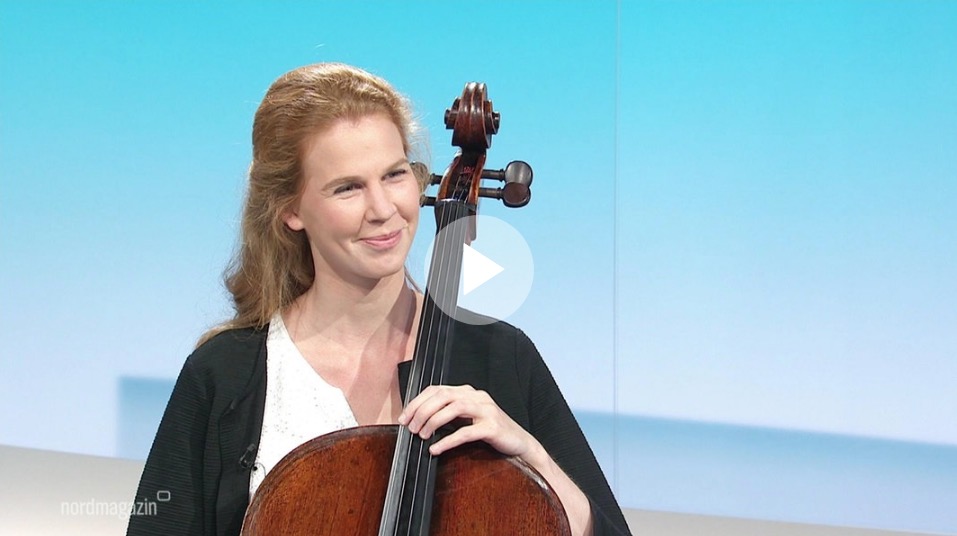Three extraordinary soloists could be heard on March 30 and 31, 2023, in the Großer Sendesaal. The Skride sisters and Harriet Krijgh brought no less a piece than Beethoven’s Triple Concerto.
© NDR, Photo: Helge Krückeberg
As the soloist in Camille Saint-Saëns’ First Cello Concerto, Harriet Krijgh was unquestionably the center of attention, while the Graz Philharmonic exercised – finely accented and as colorful as it was sonorous – restraint, ensuring that the soloist was never in danger of being overshadowed by the orchestra. Her playing captivated with a compelling mix of emotion and verve, and the richness of color she drew from her instrument literally made the air in the hall shimmer.
Krijgh’s technical sovereignty, which she demonstrated most impressively in the cadenza of the second movement, was not merely an end in itself, but acted like a declamatory scene of an actor in a drama. With an elegantly presented encore – the Sarabande from Bach’s First Cello Suite – Krijgh finally bid farewell to the Graz audience before the intermission.
Isabella Steppan, June 23, 2022
Sound Adventures Then and Now: Contemporary Works from Ukraine, Avant-Garde from 1830, and a Grand Cellist at the Musikverein.
The encore was almost the best part: Harriet Krijgh interpreted the Sarabande from Bach’s
Cello Suite No. 1 as an elegantly contemplative piece born from silence. Krijgh also had a high-quality performance in Camille Saint-Saëns’ Cello Concerto No. 1. Free from sentimentality and precise, lean and emphatic, the Dutchwoman unfolded its sound cosmos.
Martin Gasser
Kleine Zeitung Graz
Cellist Harriet Krijgh is a star of the classical music scene and celebrates successes worldwide. This year, the Dutch musician is an award recipient at the Mecklenburg-Vorpommern Festival.
Source: ndr.de

